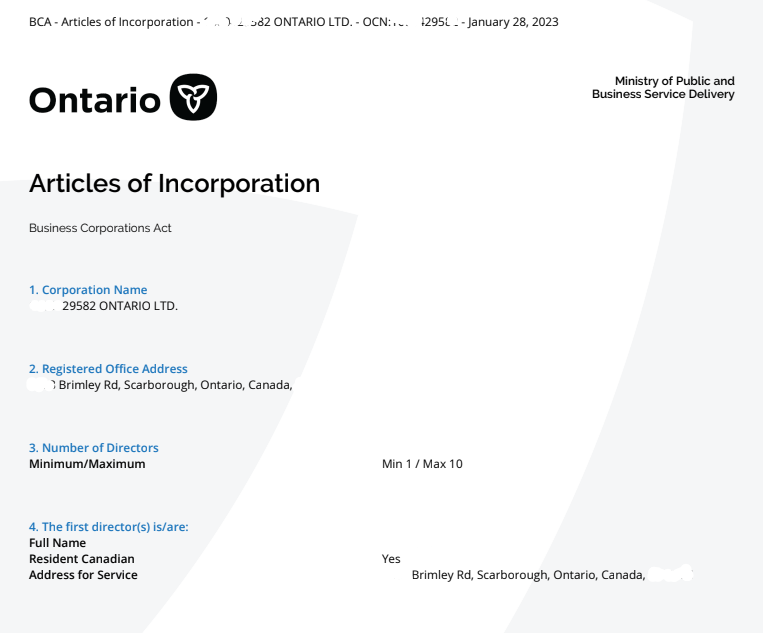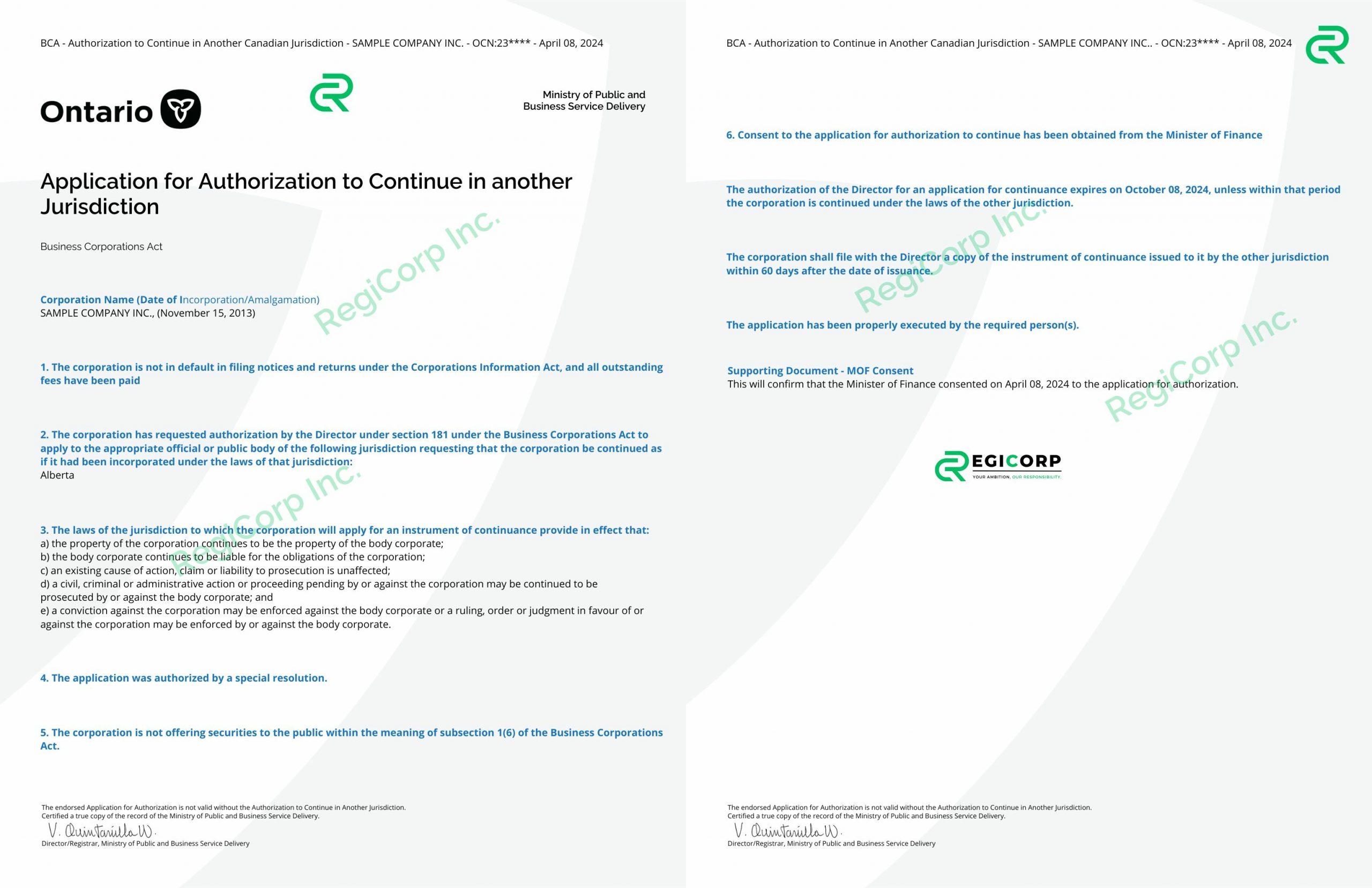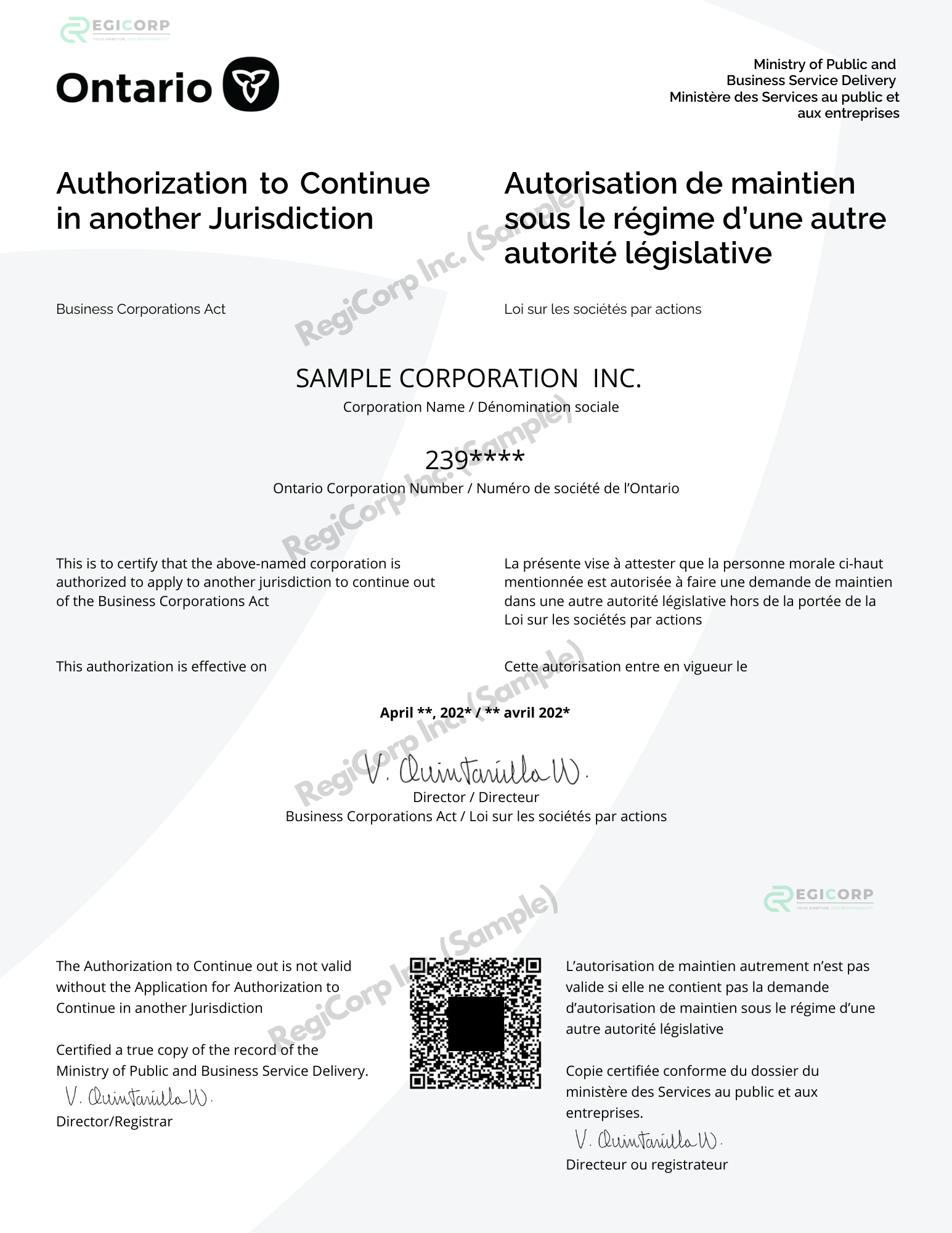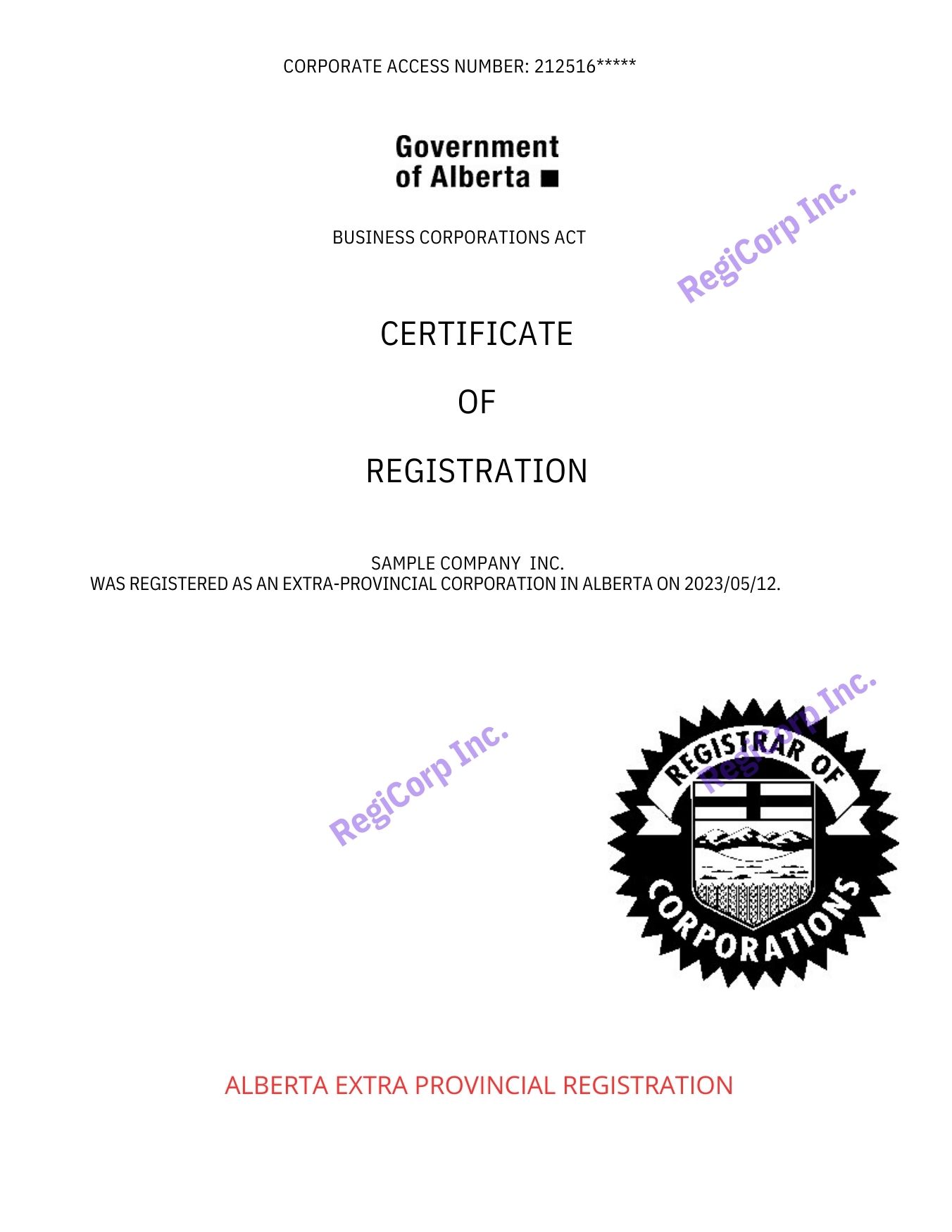What is continuance of corporation?
Continuance, also known as continuance (import), Jurisdiction change or moving out of a corporation allows a corporation moving in one Canadian jurisdiction (province/territory) to essentially “re-incorporate” under the laws of another new jurisdiction. This lets your corporation operate under the new jurisdiction’s legal framework.
Why are corporations changing their Jurisdiction?
There are several strategic, economic, and regulatory reasons for a corporation may change their jurisdiction or moving their incorporation from one province, territory, or country to another.
Here are some of the most common motivations for such a change:
- Lower Tax Advantages than existing Province
- Corporations may change jurisdictions to take advantage of a more business-friendly regulatory Environment.
- Access to more potential Markets
- More Economic Stability
- More Availability of Resources than current Jurisdiction
- Government Incentives such as grants, subsidies, or reduced tariffs
- Being incorporated in a reputed jurisdiction for Corporate Image and Branding
- Shareholder Preferences
- Litigation Risk
The process involves careful planning and legal compliance. This article can provide you a detailed walkthrough of jurisdiction change of a corporation.
What are Articles of Continuance of corporation?
Jurisdiction change for a corporation means shifting the legal Registered existing Jurisdiction from one province or territory to another. This moving or shifting of a corporation are Governed by Federal Act (Canada Business Corporations Act, CBCA) or corresponding provincial legislation (Like OBCA, ABAC etc.). This process requires paper works adherence to specific legal protocols to ensure legitimacy and compliance in both existing and moving jurisdiction.
That means Articles of Continuance are a key document used in the continuance process. It formally outline your corporation’s intention to shift its legal jurisdiction and typically include details like:
- The corporation’s name after continuance
- The chosen province or territory for the new jurisdiction
- Information on the board of directors (minimum and/or maximum number)
- A statement outlining the corporation’s purpose.
How are Articles of Continuance different from Articles of Incorporation?
- Articles of Incorporation: When a corporation is incorporate in a province or Federal it files Articles of incorporation. That’s why Articles of Incorporation are called the founding documents of a corporation. It males a corporation’s legal existence at the time of incorporation. Articles of incorporation includes a corporation’s name, Registered address, director(s) details, Incorporators, it’s share structure and purpose.
- Articles of Continuance: On the other hand, when a corporation wants to shift one province to another province it’s needed to file a new jurisdiction Articles and that is called Articles of continuance, or Jurisdiction Change of a corporation. In articles of continuance the following are included: New province/territory Name, any changes to board structure, and corporation’s purpose to comply with the new jurisdiction’s regulations.
Contents Articles of Incorporation generally include:
- Corporate Name: The legal name of the corporation.
- Corporate Purpose: Some jurisdictions require a statement of the corporation’s purpose, though many allow for a very broad purpose, such as to engage in any lawful activity.
- Registered Office: The address where the corporation’s primary office is located.
- Board of Directors: The number of directors, including minimum and maximum numbers if variable.
- Share Structure: Details of the type and class of shares the corporation is authorized to issue, including any rights, privileges, restrictions, and conditions.
- Incorporators: Names and addresses of the incorporators who are initiating the incorporation process.
- Registered Office
- Other Provisions

Purpose and Use of Articles of continue and articles of Incorporation:
The primary purpose of the Articles of Incorporation is to establish the corporation as a legal entity, separate from its owners, with its own rights and liabilities.
Articles of Continuance are used when a corporation already established under one jurisdiction’s laws wishes to relocate and continue under another jurisdiction’s laws. This document is akin to “reincorporating” the corporation under new legal statutes.
When are Articles of Continuance filed?
Articles of Continuance are filed with the corporate registry of the new jurisdiction you’re moving your corporation to.


What is the different between Continuance and extra provincial Jurisdiction?
May be you are confused between Continuance and extra provincial Jurisdiction. Some people its look it is similar, but no. There are many different between them.
The first and foremost difference between continuance and extra-provincial jurisdiction lies in the legal status of your corporation:
Articles of Continuance:
- Shift in Legal Home: Continuance of a corporation means a corporation completely change its legal jurisdiction from one province/territory to another in Canada. That means it “re-incorporates” under the laws of the new jurisdiction.
- Dissolution and Rebirth: For moving one province to another you must first dissolve your current corporation in existing jurisdiction and collect certificate of dissolution. After submitting your Certificate of dissolution to new jurisdiction, your corporation becomes a new corporation under the new jurisdiction laws. However, corporation’s full history and ongoing contracts often remain valid.
- Complexity in Process: Some provinces allow to continuous process completely online, but many provinces need both online and Manual both. To Continuance you may need shareholder approval, filing applications with both the original and new jurisdiction’s registries, and ensuring compliance with the new jurisdiction’s regulations.
Extra-Provincial Registration:
- Doing Business in other provinces: Extra provincial registration allows a corporation to incorporate in one province/territory, but conduct business activity in another province/territory without changing its legal jurisdiction.
- Original Corporation Remains: Your corporation maintains its original legal status and continues to operate under the laws of the original jurisdiction.
- Simpler Process: Extra-provincial registration typically involves a less complex process, often requiring just registering with the new jurisdiction and potentially obtaining additional permits or licenses.
Here’s an example of difference:
- Continuance: Continuance is like you are moving to a new country and going through the entire immigration process to become a citizen there. You leave your original citizenship behind and become a citizen of the new country.
- Extra-Provincial Registration: We can say extra provincial is like getting a work visa for another country. You can work there legally, but you remain a citizen of your original country.
Choosing Between Continuance and Extra-Provincial Registration:
In a sentence you can not say which one is good. The best option depends on your specific needs:
- Continuance: If you want to fully move your corporation into the new jurisdiction and benefit from its specific legal and regulatory framework. Then continuance of a corporation is best option.
- Extra-Provincial Registration: If you think that you only need to conduct limited business activities in the new jurisdiction and don’t require the full benefits of operating under its laws.

What is Required to Continue into Another Jurisdiction in Canada?
To continue into another jurisdiction in Canada, a corporation must file Articles of Continuance in the new jurisdiction. This requires approval from the corporation’s board of directors and shareholders, typically via a special resolution. The corporation must also be in good standing in its current jurisdiction and comply with the specific requirements of the new jurisdiction, which may include adjustments to its corporate structure and governance.
Using RegiCorp to File Articles of Continuance in Canada
If you want to File articles of Continuance or jurisdiction change of a corporation in Canada RegiCorp Inc, is here to give you full support. We have experienced team, who can ensure a smooth transition to a new jurisdiction.
If you’re thinking to change your corporation’s jurisdiction you may consider partnering with RegiCorp. Our expert team, with 10 years of experience in the field, is ready to assist you with every aspect of the jurisdiction change process. Contact us today via email, chat or Phone.
FAQs on Articles of Incorporation and Articles of Continuance
1.Is a Name Search or NUANS Report Required When Entering a New Jurisdiction?
Yes, a name search is required before you file articles of continuance in new jurisdiction. This report is needed to ensure that the corporate/business name is available and does not conflict with existing registered names in that jurisdiction. This search helps prevent legal issues related to trademark and business name conflicts.
2.What if the Corporate Name is Not Available in the New Jurisdiction?
If the corporate name is not available in the new jurisdiction, the corporation will need to choose a new or alternative name that complies with the naming rules of the new jurisdiction. This new name must be included in the Articles of Continuance and may require the corporation to update its branding and legal documents to reflect the change.
3.What Happens to the Original Incorporated Company?
When a corporation files Articles of Continuance to move to a new jurisdiction, the original incorporated company does not dissolve; instead, it continues its existence under the laws of the new jurisdiction. Legally, it is the same entity, but it now adheres to a different set of regulatory and legal frameworks.
4.What are Articles of Incorporation?
Articles of Incorporation are a legal document filed with a government body to legally establish a corporation. This document defines the corporation’s structure, powers, and purpose, officially marking its creation as a separate legal entity.
5.What information is typically included in the Articles of Incorporation?
The Articles of Incorporation usually include the corporation’s name, purpose, registered office address, details about the share structure, the number of directors, and the names and addresses of the incorporators.
6.Why would a corporation file Articles of Continuance?
A corporation might file Articles of Continuance to benefit from more favorable tax laws, regulatory environments, or operational efficiencies offered by a different jurisdiction. It’s a strategic decision to optimize the corporation’s operations or governance.
7.How do the contents of Articles of Continuance differ from Articles of Incorporation?
While Articles of Continuance may resemble the initial Articles of Incorporation, they typically include modifications to comply with the new jurisdiction’s legal requirements and may detail the transition provisions, confirming the continuation of all assets, liabilities, and obligations.
8.Can a corporation change its name during the continuance process?
Yes, a corporation can choose to change its name as part of the continuance process, provided the new name adheres to the naming rules of the new jurisdiction and is properly indicated in the Articles of Continuance.
9.What if My Originating Corporation is Outside of Canada?
If you have an existing corporation that exists outside of Canada, you can complete an Foreign Extra Provincial Licence in Ontario. Ontario provides unparalleled access to business opportunities in Canada with a very strong economic presence with low corporate tax rates.

